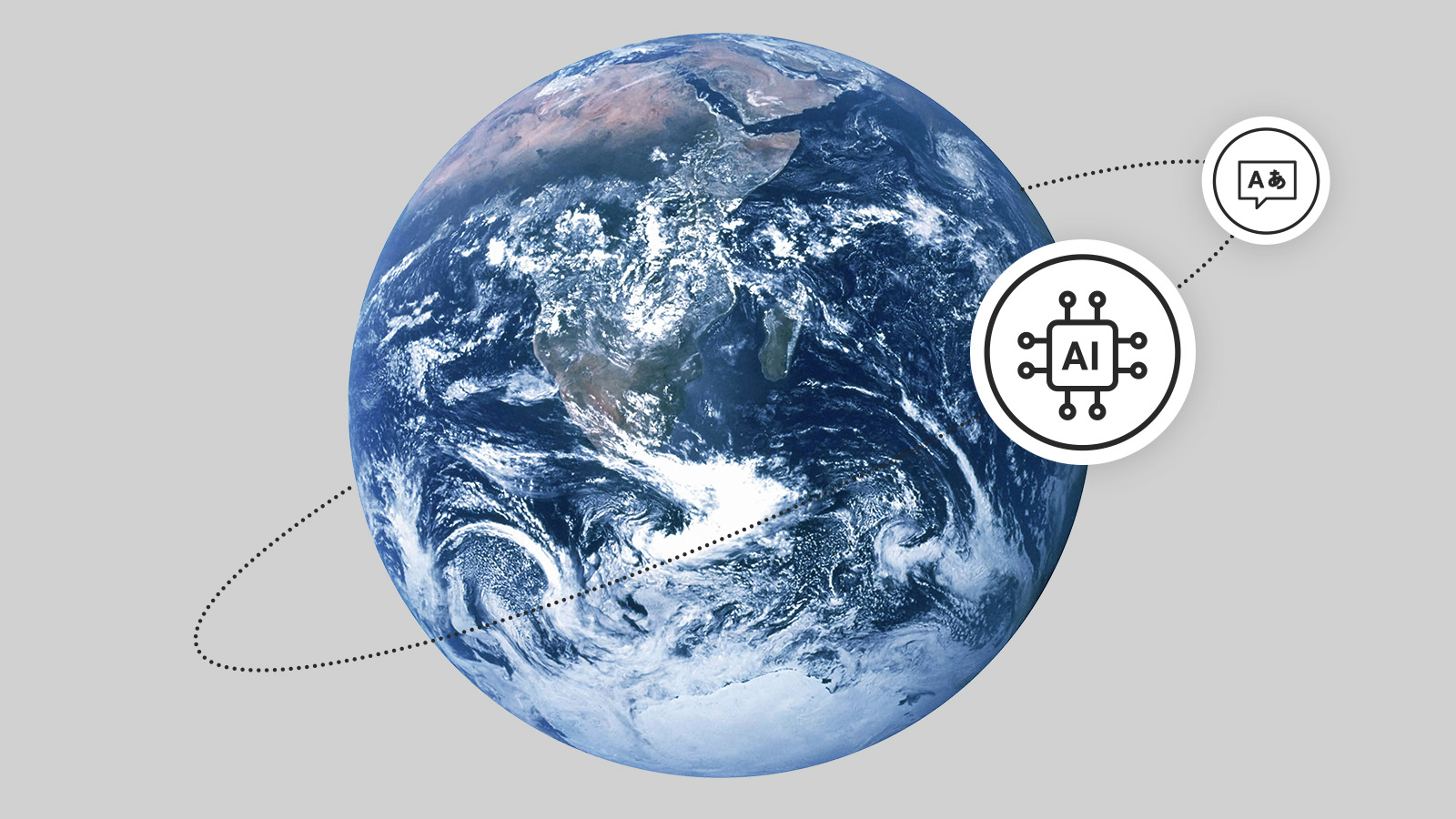
The role of AI in multilingual training at global brands
As businesses continue to globalise, delivering effective training to employees across different languages becomes a crucial challenge. Here we explore how organisations can best navigate this complex landscape, drawing on insights from recent discussions and the imc survey into the State of Learning Technologies 2024.
The evolution of content creation
The journey of content creation has evolved significantly over the decades. From VHS and CD-ROMs in the 90s to mobile learning and responsive design in the 2010s, the industry has seen a shift towards more efficient and user-friendly methods. The COVID-19 pandemic accelerated the adoption of user-generated content, highlighting the need for rapid and accessible content creation tools.

The growing importance of language-sensitive training
It's widely recognised that language barriers can impede learning and comprehension. As organisations expand their reach, the need to offer training in multiple languages becomes more pronounced. Over the years, advancements have been made in both content translation and the capabilities of learning management systems (LMS) to handle multilingual training. These developments have been instrumental in improving the learning experience for non-native speakers.
Real success stories
AI and content creation: a natural fit
AI's capabilities align well with content creation, offering innovative solutions that enhance efficiency and quality. Major AI models like GPT-4 from OpenAI, PaLM2 and Gemini from Google, and others are revolutionising how content is produced and customised.
Leveraging AI and automation
One significant advancement in this area is the integration of AI and automated translation tools. Modern learning systems are increasingly incorporating these technologies to provide real-time translations, making it easier for learners to engage with the material and participate in discussions. For instance, some systems now offer live translations during interactive sessions, allowing participants to ask questions and receive answers in their preferred language. This level of integration is crucial for fostering an inclusive learning environment.

Practical examples of AI in action
- Translation: Tools like DeepL provide accurate translations, enabling global companies to offer content in various languages without significant additional effort. This broadens the reach and accessibility of eLearning materials.
- Text to Speech: AI-driven text-to-speech technology has improved dramatically, with voices from services like OpenAI, AWS, and MS Azure sounding almost indistinguishable from real humans. This reduces costs for professional voiceovers and enhances the learner experience.
- AI Video Subtitles: AI can automatically generate subtitles by analysing and translating audio tracks, making it easier to produce multilingual video content.
- AI Avatar Videos: AI avatars, though still developing, offer a cost-effective alternative to traditional video shoots. Tools like Synthesia and Colossyan integrate translation, text-to-speech, and subtitling for varied content.
- Text Rewriting: AI tools can rewrite text to enhance readability and comprehension. This is particularly useful for subject matter experts who may not be skilled in storytelling but need to produce clear and concise content.
- Interactive Content Creation: AI can generate interactive elements such as flip cards, swipe cards, and multiple-choice questions, democratising content creation and reducing the workload of instructional designers.
- Image Generation: Generative AI tools like Midjourney, Stable Diffusion, and DALL·E create high-quality images, although copyright issues remain a grey area. These tools are poised to disrupt traditional models and picture libraries.
- Content Generation from Prompts: AI can generate initial content based on simple prompts, providing a foundation that can be refined and built upon. This is especially useful for creating general training materials.
Varied levels of adoption
However, it's important to note that different organisations are at varying stages of adopting these technologies. While some have fully integrated AI-driven translation tools, others are still in the early stages of implementation. Research indicates that the most common application of AI in corporate training is indeed in the area of translations. This trend is expected to continue as more organisations recognise the benefits of providing high-quality, accessible training materials in multiple languages.
Practical examples and challenges
In practice, companies from non-English speaking markets often have fewer issues with multilingual training. These organisations are accustomed to thinking globally and have long been integrating multiple languages into their systems. For example, a company with a clear language framework can support over 50 languages, making it easier to scale training efforts internationally.
Despite these advancements, challenges remain. Many organisations still struggle with localising content and scaling it for different regions. This can be due to various factors, including the complexity of maintaining quality across translations and the technical limitations of their existing systems. Understanding these pain points is crucial for developing more effective solutions.
Looking forward
The future of multilingual training lies in the continuous improvement and integration of AI technologies. As these tools become more sophisticated, they will offer more seamless and accurate translations, further bridging the gap between languages in the corporate training landscape.
In conclusion, while significant strides have been made in delivering training across different languages, there is still room for growth and improvement. Organisations must stay abreast of technological advancements and be willing to invest in robust solutions that cater to a diverse workforce. As the global market evolves, so too must the strategies for effective, inclusive training.
AI's integration into content creation is transforming the eLearning industry by making content more accessible, efficient, and engaging. As AI technologies continue to evolve, their impact on education will only grow, offering new opportunities for innovation and improvement in teaching and learning practices. Embracing these changes will be crucial for educators and content creators to stay ahead in the digital learning landscape.
For more information and to explore AI-driven elearning tools, discover imc Express.

